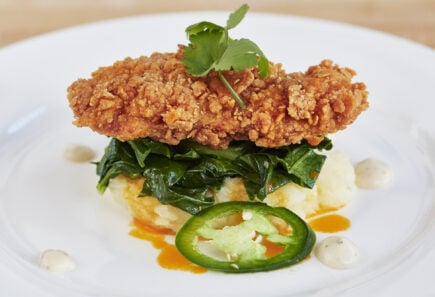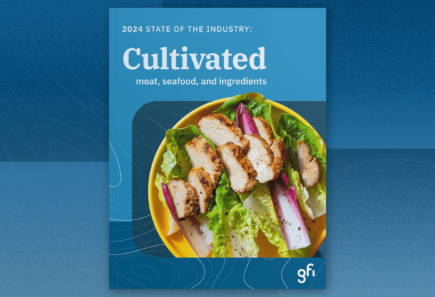Scaffolding development for culinary and biomechanical requirements of cultivated seafood
A number of published studies have focused on scaffolds for cultivated meat (see Related Efforts) yet, to our knowledge, no studies have specifically attempted to formulate scaffolds for fish or tested growth of fish cells on scaffolds developed for terrestrial meat. Because fish uniquely differ from terrestrial meat in structure, research aimed specifically at developing and testing scaffolds for fish products would advance the industry. Both scaffolding materials as well as methods for achieving the correct three-dimensional structure should be investigated.
-
Cultivated
- Research
- Commercial
- R&D
- Raw Materials, Ingredients, & Inputs
- Cell line development
- Scaffolding
- Industry
- Academics
- Startups
- 0 – Complete whitespace
Current challenge
Scaffolds developed for terrestrial species will very likely support the attachment of fish cells given zebrafish express a similar complement of extracellular matrix proteins to mammals. Notably, the stiffness of the extracellular matrix influences the fate of differentiating cells, so fish cells might require scaffolds of different stiffness in order to guide them down the correct developmental trajectory. Even if fish cells are able to differentiate correctly, scaffolds designed for terrestrial meat might not recapitulate the sensory attributes of conventional fish. Addtionally, the lower melting temperature of fish collagen contributes to the flaky texture of cooked fish. Along with unique considerations related to scaffolding materials, fish scaffolds will require tailored strategies when it comes to how those materials are structured.
Proposed solution
Existing scaffolding materials and, if necessary, additional materials of different stiffness, should be tested for their ability to support differentiation and maturation of fish cells. In order to produce products that respond properly when cooked, scaffolds should be formulated using recombinant fish collagen, other materials with similar thermal properties, or materials that degrade over time and are replaced by native extracellular matrix proteins. Additional research should address the question of how scaffolding materials can be structured to accurately reproduce 3D fish tissue.
The “chevron” pattern of fish muscle arises during development as a result of differentials in friction along the axis of each myotome. It might be possible to recapitulate this process during differentiation and maturation by starting from a scaffold made of flat layers. The 3D structure of fish muscle features greater separation of cell types relative to most terrestrial meats, with fat cells primarily located in the myosepta, as well as spatial separation of muscle fiber types into red and white muscle. These characteristics should be recapitulated via non-homogenous cues, including stiffness, surface patterning, and/or molecular cues, within the scaffold structure.
Anticipated impact
Appropriate scaffolds for fish will substantially impact the quality of the cultivated fish products available on the market and therefore uptake by consumers. Having high-quality, whole fillets on the market sooner will help mitigate the risk of cultivated seafood stagnating at a point where unstructured products are widely available, but unable to substantially replace demand for conventional whole-cut products. The scaffolding challenge ought to be addressed by both academia and industry. Open-access research can establish best practices and provide a solid foundation of viable strategies for the industry to build upon. This will provide an opportunity for companies to develop IP centered around scaffolds that produce the most delicious product possible at the lowest possible cost. In this way, the early research will raise the bar for the types of competition we will see within the industry.
Related efforts
Previous research on scaffolding for terrestrial meat:
- Orellana et al. 2020
- MacQueen et al. 2019
- Campuzano and Pelling 2019
- Ben-Arye et al. 2020
- Enrione et al. 2017
- Verbruggen et al. 2018
Additional Resources:
GFI resources

The science of cultivated meat
Learn about the science of cultivated meat and the challenges that must be addressed for commercial production.

State of the Industry: Cultivated meat, seafood, and ingredients
This report details the commercial landscape, investments, regulatory developments, and scientific progress in the cultivated meat and seafood industry.

Find collaborators
Join the GFIdeas global community of 2,000+ entrepreneurs, scientists, investors, and subject matter experts. Discuss projects on the members-only Slack community, attend monthly seminars, and use the community directory to help you find collaborators working on similar Solutions!
Related solutions
-
Cultivated
Computational models of perfusion flow through scaffolds
For tissue-structured cultivated meat production, the transition from the proliferation phase to differentiation phase may involve seeding cells onto a prefabricated scaffold within a perfusion bioreactor. Medium is then perfused…
-
Cultivated
3D microenvironments for cell expansion
Proliferation and high-density cell growth are fundamentally important to scaling cultivated meat production. Recent demonstrations of stem cell expansion in 3D microenvironments such as encapsulated spheres or tubules can generate…
-
Cultivated
Establishment of cell line repositories and standardized isolation protocols
Development of humanely-sourced and thoroughly documented and characterized cell lines from a variety of common food species—together with a mechanism for licensing and distributing these lines to researchers and companies—will…

Explore the full solutions database
Browse 300+ startup ideas, commercial opportunities, research projects, and investment priorities throughout the alternative protein supply chain.
Get involved
If you’d like to fund a research project, work on any of these solutions, share information about related efforts that are already underway, or elevate new ideas for advancing the alternative protein industry, we’d love to hear from you!
